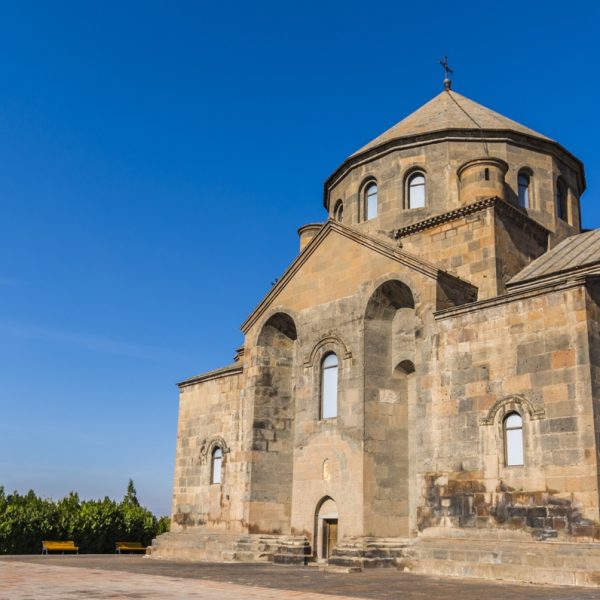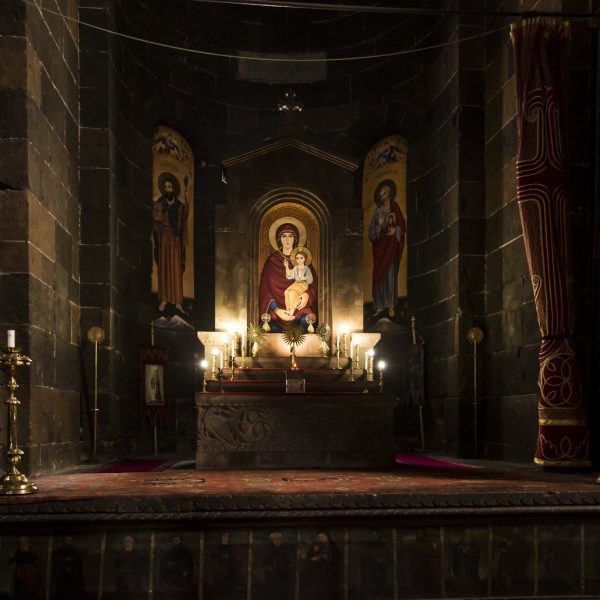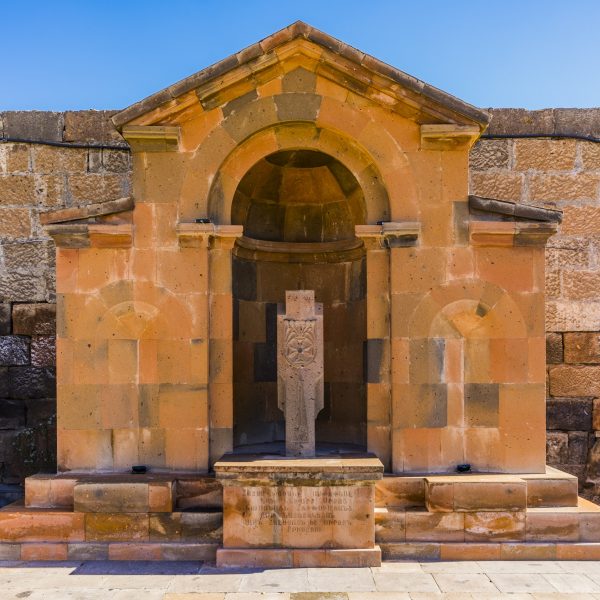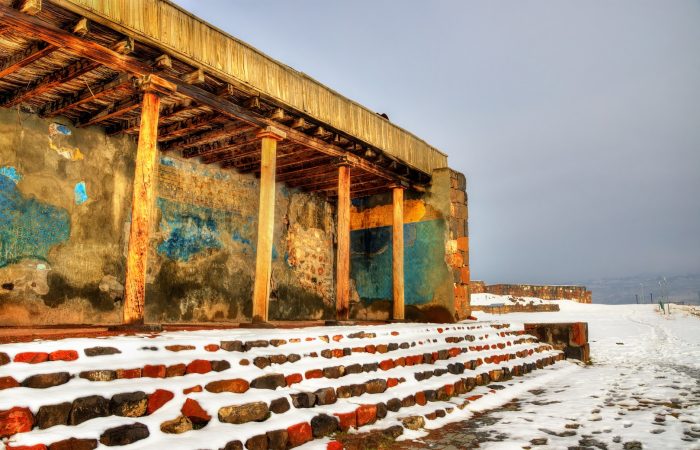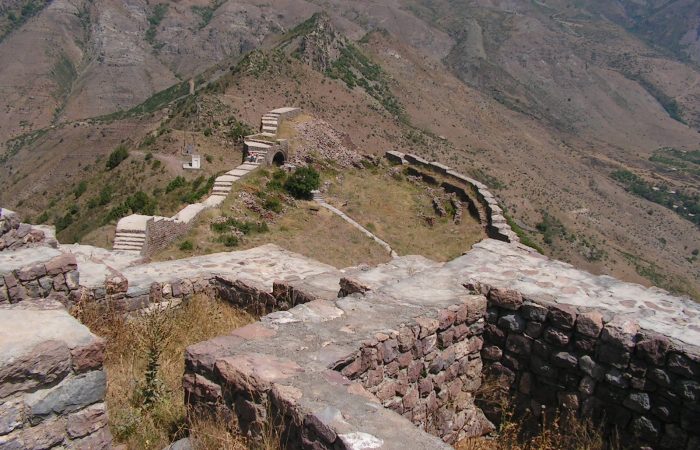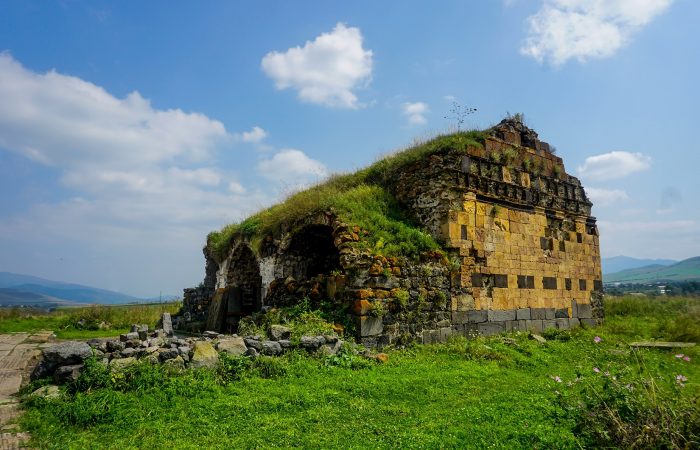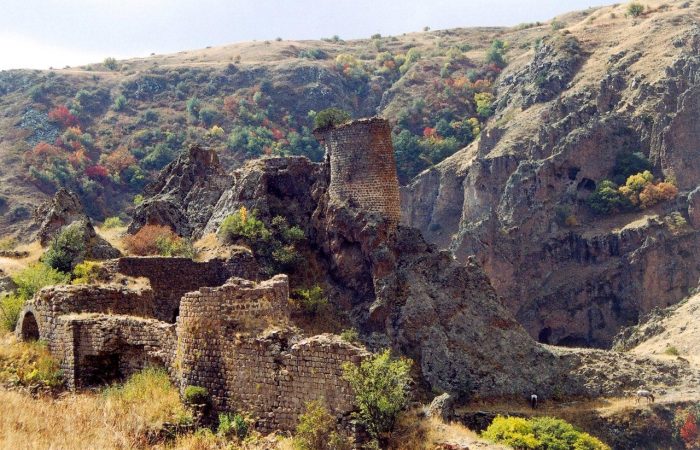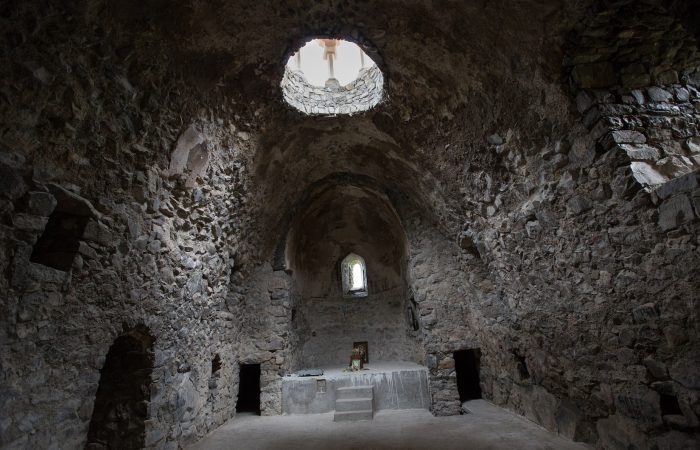Saint Hripsime Church: Brief Account
The Church of Saint Hripsime is one of the improved samples of early medieval Armenian spiritual buildings with a most complicated structure. It was founded in 618 by Catholicos Komitas I Aghtsetsi in the place of a sepulcher built in the fourth century to Saint Hripsime. In 2000 Saint Hripsime Church was included in UNESCO World Heritage List.
Two prominent Armenian Cathlicoses who have played an important role in the Armenian history are buried in the courtyard of Saint Hripsime Church. They are Catholicos Astvatsatur (1715-1725) and Catholicos Garaped II Oolnetzi (1725-1729).
Saint Hripsime Church: Saint Hripsime
Christianity was adopted as state religion in Armenia in 301. Before that Armenians were pagans and therefore Christians were being persecuted, tortured and martyred. So who was Saint Hripsime?
Saint Hripsime was a Roman virgin with indescribable beauty, which had amazed Emperor Diocletian so much that he wanted to marry her. The virgin escaped with thirty-five virgins, among them Saint Gayane, and came to Armenia. Escaping the tyrant and his advances of forced marriage didn’t prove to be a way out, since he sent a letter to Armenian King Tiridates in which he was asking him to find and send back to him Saint Hripsime and to martyr the rest of the virgins. King Tiridates, however, was as well captured by the beauty of Hripsime and wished to marry her, which the saint refused. Enraged by that, the king ordered to keep the virgins in separate places, torture and martyr them. Just like the rest of the virgins, Hripsime was also severely tortured and killed (in about 290).
The Church of Saint Hripsime was built in the place where she died. The saint’s sepulcher currently lies there too.
Saint Hripsime Church: Construction
The legend has it that the church was built by Armenian King Tiridates and Saint Grigor Lusavorich (Gregory the Illuminator) in the place where Saint Hripsime was martyred. It was ruined by Persians in the fifth century and a new one was later built by Catholicos Sahak Partev. With the long construction period the church was eventually founded by Catholicos Komitas I Aghtsetsi. In an inscription found on the main altar the Catholicos describes himself as the “Builder of Saint Hripsime Church.”
The church acquired new additions only in the 17th-19th centuries; in 1653 Catholicos Pilippos renovated the church and built an open gavit at the western entrance; in 1776 the church’s brick walls were built; in 1880 the belfry was built on the church gavit; in 1894 eastern and southern walls were built and so on. On the whole, the church represents a unique Armenian structure.
Saint Hripsime Church was renovated in 1898. During the renovations base-stones were revealed, which show that in the place of the church there used to be a pagan temple. Also, the excavations held around the church territory revealed an early medieval single-nave church as well as pre-Christian and early Christian funerals.
Saint Hripsime Church: Architecture
From the outside the Church of Saint Hripsime represents a square central-dome structure, while from the inside it is cruciform. Various architectural solutions were implemented to make the church earthquake resistant. One such solution were the triangular niches on the outer walls. The church has a sixteen-facet cupola with round towers at the base.
The interior design of Saint Hripsime church is not only complicated but also extraordinary. There are large apses in the four corners of the church. Other than that, there are four narrow and cylindrical niches, which take to the four annexes found in the four corners. Overall, the interior is modest with no excessive decorations. The vaulted sepulcher of Saint Hripsime is located below the mail altar.
The type of Saint Hripsime Church has been reproduced time and again, and it is noted not only in various Armenian structures, but in structures of the Transcaucasus as well. As to Armenia, there are many churches appearing close to Saint Hripsime Church with their appearance. Among them are Avan’s Saint Hovhannes Church (5th century), Aramus’s Tsiranavor Saint Nshan Church (6th century), Zoradir’s Saint Ejmiatsin Church (6th century), Varagavank’s Saint Astvatsatsin Church (10th century) and so on.
To sum up, the Church bearing the name of Saint Hripsime, who over the centuries has been the undeniable embodiment of chastity and modesty, is visited by thousands of people throughout the year. The most frequent visitors are the ones who carry the name Hripsime, who visit the church to be blessed exactly there.

